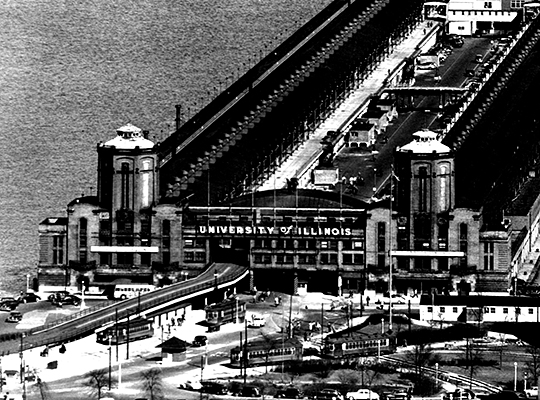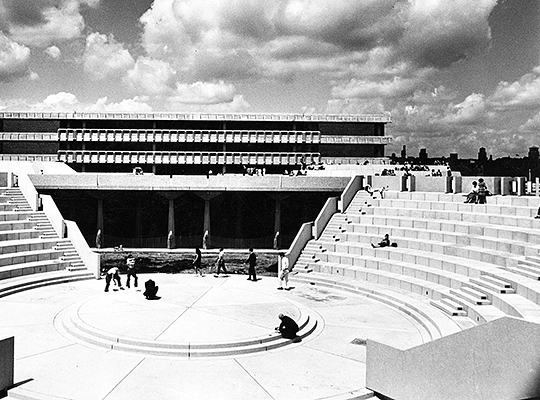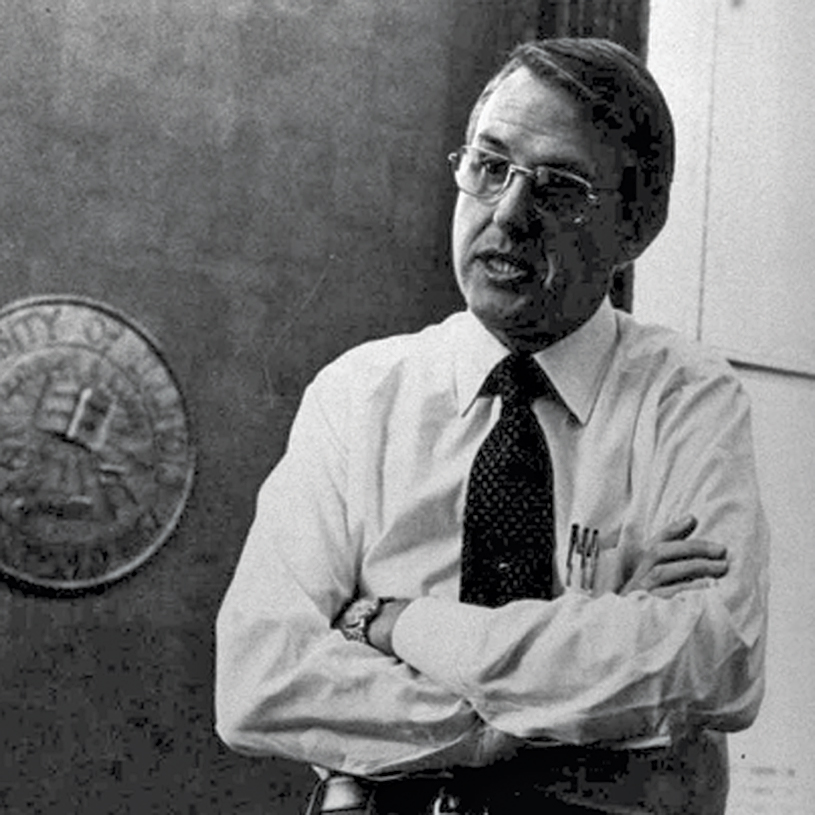UIC was born in 1982 when the Circle and Medical Center campuses consolidated to form a comprehensive university campus with seven health science colleges and an academic medical center. Consolidation helped UIC reach elite Carnegie Research I status.
In 1993, then-UIC Chancellor (and later UI President) James Stukel launched the Great Cities Initiative to join UIC teaching and research with community, corporate and government partners in tackling urban challenges. Renamed the Great Cities Commitment at its 10-year mark, the signature program integrates research with genuine community engagement.
In the 2000s, UIC’s South Campus development brought student housing, retail stores, restaurants and private residences to the historic Maxwell Street neighborhood. The influx of faculty and staff families and the expansion of student housing helped UIC change from a daytime commuter campus into a vibrant, 24-hour academic community. Today, one-third of UIC first-year students and about one-fifth of undergraduates live on campus.
In July 2019, UIC opened its newest campus living facility. The 10-story Academic and Residential Complex, which is part of a public-private partnership, holds 550 beds in a mix of traditional dorm rooms and suite-style units. Three large lecture halls, four classrooms, several small group study rooms, a tutoring center, computer stations and collaboration spaces are highlights of the facility’s academic areas.
The Engineering Innovation Building, which also opened in July 2019, is the first new academic building on the east side of campus since 1991. The 50,000-square-foot facility houses instructional space, research labs and faculty and staff offices. The building also includes the university’s first high-bay structural research lab, where researchers can carry out a wide range of tests on large-scale structural components.
Additional new campus construction projects are underway to support scholarship and research and improve the student experience.
In August 2019, UIC acquired the John Marshall Law School and formed Chicago’s only public law school. Formerly an independent private school, John Marshall was founded in 1899 and for over a century upheld a tradition of diversity, innovation and opportunity and provided an education that combines an understanding of the theory, the philosophy and the practice of law. The creation of UIC School of Law provides current and prospective law students with more affordable education, as well as enhanced student services, such as access to health care, recreational facilities, residence halls and college athletics. There will be opportunities to take interdisciplinary courses, and new joint-degree and dual-degree programs are in development. These courses and programs align with UIC’s strengths in disciplines such as the health sciences, engineering and technology, urban planning and public administration, the social sciences and business.







